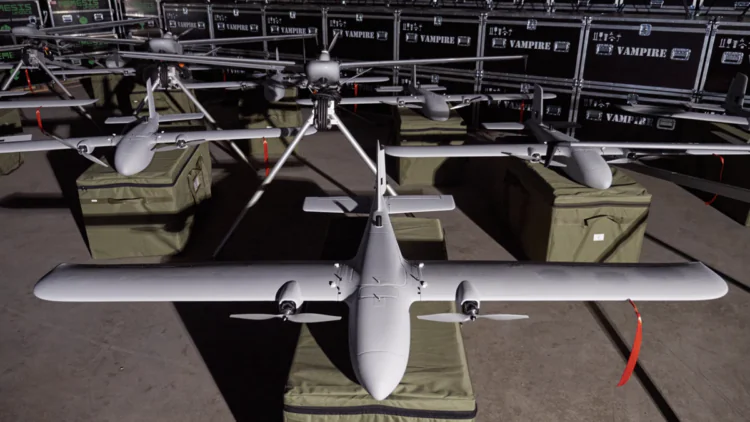Modern warfare is unimaginable without drones and unmanned aerial vehicles (UAVs). We want to tell you about the best contemporary Ukrainian UAVs.
Unmanned aerial vehicles have long been used in military operations for surveillance, reconnaissance, artillery fire adjustment, and striking ground targets. However, in the Russia-Ukraine war, the use of UAVs has become unprecedentedly widespread. Besides specialized military drones, civilian devices are also extensively used in combat. In battles, both mini versions weighing from 300 grams and multi-ton jet-powered vehicles are employed. Civilian models actively operate in both urban and trench warfare. Often, information gathered through UAVs becomes critically important in preparing ambushes against armored vehicles. UAVs frequently work in conjunction with tanks or artillery units. For destroying targets on the battlefield or in the frontline zone, our defenders use “kamikaze drones.” Medium-class UAVs, armed with guided munitions, can hunt armored vehicles and light watercraft. There are also instances where our defenders used heavy jet-powered reconnaissance UAVs of Soviet origin as cruise missiles.
Currently, Ukrainian defenders receive dozens of types of civilian and military UAVs from both foreign and domestic manufacturers. Given the wide range of commercial models available to the Armed Forces of Ukraine, this publication will present the most widely used drones, as well as those whose use has caused the most significant impact. We will highlight the most successful developments of Ukrainian drone and UAV manufacturers.
TABLE OF CONTENT:
What types of UAVs are used by the Ukrainian military?
There are generally four classes of drones used by the Armed Forces of Ukraine on the battlefield. Let’s delve into each class in more detail.
The first class includes microdrones and/or civilian drones. This category encompasses the Black Hornet, produced by the American company Teledyne FLIR, as well as civilian drones modified for combat purposes, such as UAVs from the Chinese company DJI and the American company Autel, which have been equipped with munitions or tracking devices.
These drones are quite compact and relatively easy to operate. However, they have limited flight range and mediocre autonomy. Despite these limitations, their simplicity and compactness make them frequently used in combat situations.

The second class includes medium-class UAVs, which are frequently used at the tactical level for reconnaissance purposes. These drones are specifically designed for particular objectives. They are of medium size and can stay airborne for extended periods. Some models can fly autonomously for up to 4 hours. In Ukraine, this class includes UAVs such as the Furia and Leleka-100. This class is currently one of the most popular and promising.
The third class comprises operational-tactical UAVs. These drones have an extended range and high autonomy, up to 10-12 hours, allowing them to operate behind enemy lines, aiding the Armed Forces of Ukraine in gathering intelligence data for planning combat operations and special missions. Examples of this type of UAV include the multi-purpose drones PD-2 and Raybird-3, produced in Ukraine. They have repeatedly proven their capability to perform aerial reconnaissance tasks effectively.
The fourth class consists of strike (combat) or strategic UAVs, which are truly the elite of the UAV world. Notably, this includes the renowned Turkish combat drone Bayraktar TB-2, which has instilled fear in Russians since the early days of the full-scale war. These drones can remain airborne for extended periods, some for more than 24 hours, conducting aerial reconnaissance deep behind enemy lines and carrying guided bombs. They are often referred to as “airplane-type” UAVs.
10 best Ukrainian UAVs of today
Let’s return to Ukrainian manufacturers of drones and unmanned aerial vehicles. We decided to compile our own list of the best developments from Ukrainian manufacturers. We should note that this is not a ranking but an attempt to highlight drones that have passed certification and are in serial production.
It is worth mentioning that our manufacturers have been striving to produce drones for the Armed Forces of Ukraine for a long time. The first developments began around 2014-2015, when military actions in Ukraine were limited to the Donbas region.
During the large-scale hostilities, the Ukrainian Armed Forces lost most of the specialized UAVs that were in service before February 2022, which were intended for reconnaissance, battlefield observation, and artillery fire adjustment.
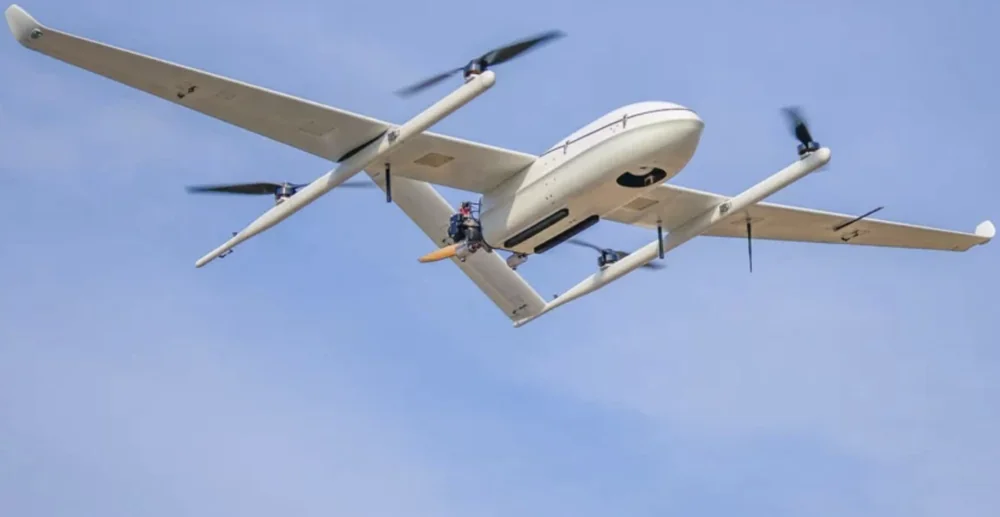
The deficit of specially designed drones capable of operating several dozen kilometers away from the control station was partially compensated by the widespread use of civilian copters on the front lines. However, by May 2022, the Armed Forces of Ukraine had signed a number of contracts for the supply of military-grade UAVs with a total value of over $8 million. As of August 2022, $20 million had already been raised for these purposes. Contracts for the supply of drones for the Armed Forces of Ukraine were signed with companies such as Skyeton, SKIF, and UKRJET.
Over the past 10 years, many interesting UAV models have been launched into serial production. Today, we will talk about these models.
A1-CM Furia
One of the most widely used unmanned complexes of the Armed Forces of Ukraine before the full-scale war was the A1-CM Furia. The drone and control equipment were developed by Kyiv-based company Athlon Avia in 2014. By the end of 2021, over 100 complexes had been delivered to the Armed Forces. The cost of one complex was estimated at $150,000. Most of the parts for this complex were manufactured outside Ukraine.

The complex includes three drones, three daytime and two nighttime interchangeable reconnaissance modules, a ground control and data processing station, antennas, and additional equipment. The operator has two monitors at their disposal. One monitor is used to track the course, speed, and current position with coordinate referencing via the GPS positioning system. The second monitor is used for real-time observation through an optical camera. Navigation of the drone is accomplished using a GPS module and an inertial system. Control and information transmission are carried out through secure digital channels. Targets are located with an accuracy of up to 20 meters, with the possibility of automatic tracking. It is also possible to adjust the fire of several artillery batteries.
The ground station is powered and the drone’s batteries are charged by a 3 kW gasoline generator. All equipment is housed in shock-resistant containers, transported by road, and can be deployed in about 15 minutes.
The drone itself is designed as a “flying wing” with a fiberglass fuselage. It has a takeoff weight of 6 kg and a wingspan of 2 meters. The flight range extends up to 200 km, with the Fury capable of operating up to 50 km away from the control point. Its cruising speed is 65 km/h, with a maximum speed reaching 130 km/h.
Spectator-M1
In 2019, the Ukrainian Armed Forces received the Spectator-M1 drone system. Developed by Kyiv Polytechnic Institute and manufactured by VDNH “Meridian” named after S. Korolev, over 30 systems were delivered to the customer by February 2022. The system consists of three drones and a set of ground equipment.
The drone features a wingspan of 3 meters and is powered by two 16 Ah batteries, providing a flight duration of up to 2 hours. The aircraft’s length is 1.295 meters, with a takeoff weight of 5.5 kg. Its electric propulsion system can accelerate the drone to speeds of up to 140 km/h. The control station has a range of up to 30 km, and the drone can operate at altitudes up to 3000 meters.
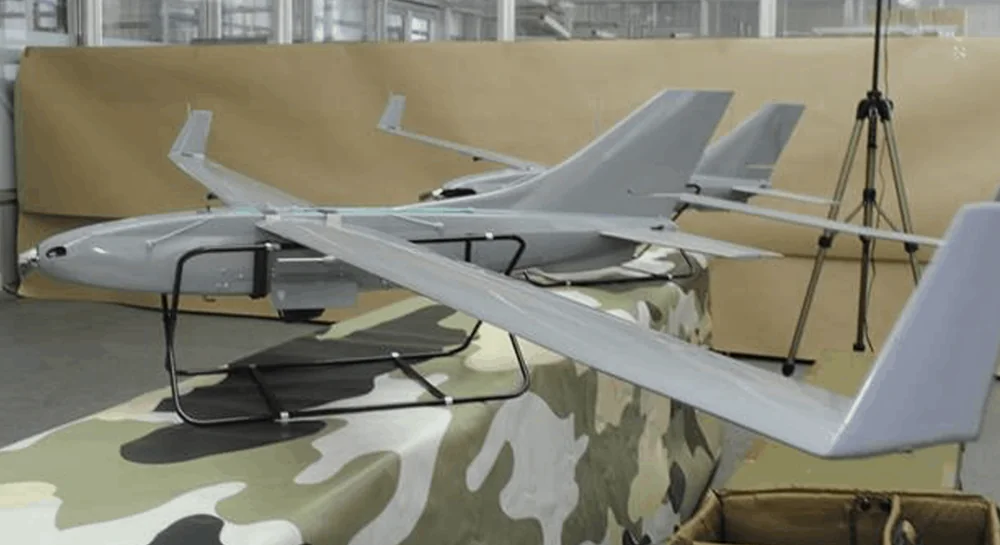
The upgraded Spectator-M1 variant includes a thermal imaging camera in addition to the daytime camera. The video transmission controllers have been replaced with digital-encoded ones. Additional control frequencies and video signal transmission frequencies have been integrated, with switching according to a specified algorithm, enhancing resistance to electronic warfare (EW) systems. The Spectator-M1 also features an integrated automatic target coordinate detection system. The image transmission range extends up to 35 km.
The upgraded drone variant is equipped with higher-capacity batteries, extending its flight time to 3 hours. The maximum flight range is up to 200 km.
Leleka-100
One of the most advanced drones in the Ukrainian Armed Forces is the Leleka-100 UAV, developed by the Ukrainian company DeViRo. The drone was adopted into service in May 2021.
The Leleka-100 is equipped with a pusher propeller driven by an electric motor. Its body and wings are made from fiberglass and carbon fiber. The drone’s length is 1.135 meters, and its wingspan is 1980 mm. It weighs approximately 5 kg. The maximum speed is 120 km/h, with a cruising speed of 60 km/h. The drone can stay in the air for up to 2.5 hours, with a guaranteed mission range of 100 km. Its ceiling is 1500 meters. Depending on the production time and specific mission requirements, the drone can be equipped with various types of cameras. The signal transmission range is up to 50 km.

The Leleka-100 UAV is managed using a radio station with encrypted digital channels, ensuring the security of telemetry data during flight. The operator can track the drone’s location via satellite maps, adjust its route, command an emergency return to the launch point, or program an alternative landing location if needed. Additionally, in the event of radio communication disruption, the drone is capable of continuing its autonomous flight and will confirm and execute landing at a pre-programmed point.
The Leleka-100 UAV transmits video signals in an encoded format, making interception difficult. The system is designed to operate effectively in complex environments with interference and electronic warfare (EW) conditions, and it can function even when the satellite navigation system is blocked.
PD-2
In 2018, during a parade in Kyiv, the PD-1 unmanned aerial reconnaissance system was showcased. It served as the prototype for a series that has since been upgraded, and the Ukrainian Armed Forces now use the enhanced PD-2 model.
The PD-1 system was developed by UkrSpecSystems. The funding for the first system came from sponsors, while volunteers raised the money for the second one. Hence, the drone was named the People’s Drone, or PD for short. The system includes a drone with an internal combustion engine, equipped with a USG-212 hydrostabilized platform with a high-resolution television camera and a thermal imager, a vehicle for terrain movement, and a portable control station. The drone can be remotely controlled up to a distance of 85 km, and television images can be received from the station up to 50 km away.
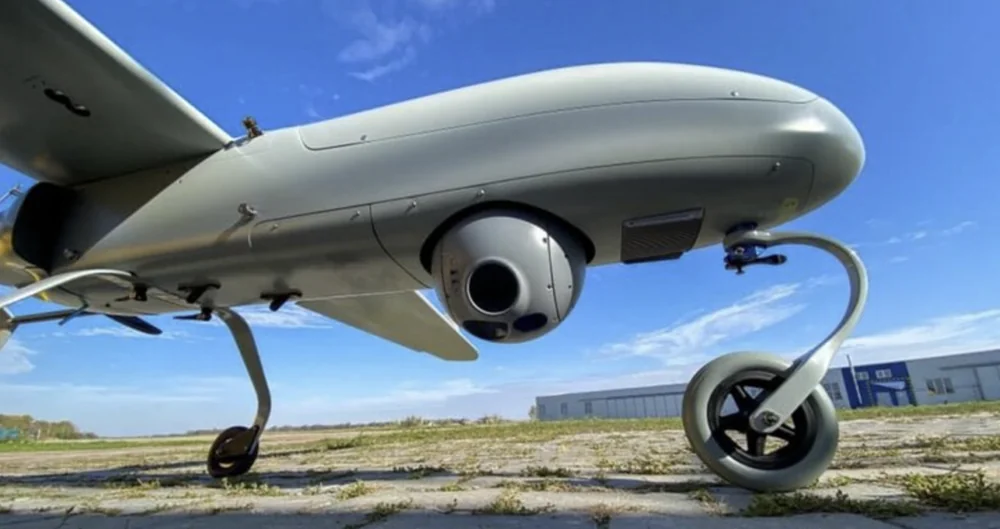
Although the system lacks strong protection against interference, suppression of control channels, data transmission, and satellite navigation systems, the flight continues along the programmed route. In this case, inertial navigation equipment is used, and the images are recorded onto a storage device.
The drone, with a wingspan of 3 meters, weighs 33 kg when fully equipped. Its maximum speed is 140 km/h, with a cruising speed of 90 km/h. The ceiling is 2000 meters, and the flight duration is 5 hours. In the updated PD-2 version, the total flight range on a single tank can reach 1000 km or more. Additionally, developers have managed to increase the operational range, which is now 180 km.
A special device is used for the takeoff of the drone, enabling vertical launch of the PD-2. This approach has increased the drone’s launch mobility, as the earlier models could only take off from a runway.
It is worth noting that before and at the beginning of the war, all production took place in the workshops of UkrSpecSystems. However, due to subsequent rocket attacks, a decision was made to relocate part of the production to other regions and even abroad.
UJ-22 AIRBORNE
The UJ-22 AIRBORNE drone from UKRJET is one of the largest drones developed in Ukraine. It is positioned as a multipurpose platform capable of operating around the clock and carrying various payloads, such as reconnaissance and surveillance equipment, as well as fragmentation and cluster munitions.
The drone has a takeoff weight of 86 kg and is equipped with a two-stroke gasoline engine. It measures 3300 mm in length with a wingspan of 4600 mm. Its maximum speed is 180 km/h, with a cruising speed of 120 km/h. The flight duration exceeds 8 hours, and its practical ceiling is 6000 meters.

The UJ-22 AIRBORNE drone can be controlled in automatic, semi-automatic, and manual modes. Communication between the ground control station and the drone is conducted through digital encrypted bidirectional channels. The control equipment, antenna mast, and power generator are mounted on high-mobility vehicles.
The UJ-22 AIRBORNE can maintain communication with the ground station up to a distance of 120 km. In autonomous programmed mode, the drone is capable of conducting reconnaissance missions, penetrating several hundred kilometers beyond the front line.
In 2021, a variant of the UJ-22 Airborne drone was introduced, equipped with two 82-mm mortar shells. This variant of the drone could also carry drop bombs with cumulative munitions, created by modifying PG-7 rocket-propelled anti-tank grenades.
It is known that the operator-controlled drone can search for moving targets and deliver precision strikes. When bombing stationary targets with known coordinates that are located at a significant distance from the control station, a programmed mode is used, and navigation is guided by satellite positioning signals. If the drone’s return is not planned, its operational range in strike mode is up to 800 km.
Raybird
The military-upgraded version of the Raybird-3 drone from Skyeton, also known as the ACS-3, is transported in four containers and requires less than 20 minutes for launch.
The ACS-3 is powered by a single-cylinder four-stroke gasoline engine with a displacement of 40 cm³ and a power output of 3.8 hp. The drone, with a takeoff weight of 23 kg, can carry up to 5 kg of payload. Its wingspan is 2960 mm, and it can operate at altitudes up to 3500 meters. The maximum speed is 140 km/h, with a cruising speed of 120 km/h. The flight duration is 18 hours. The flight range under ground control is up to 220 km, with the signal being relayed by another aircraft.
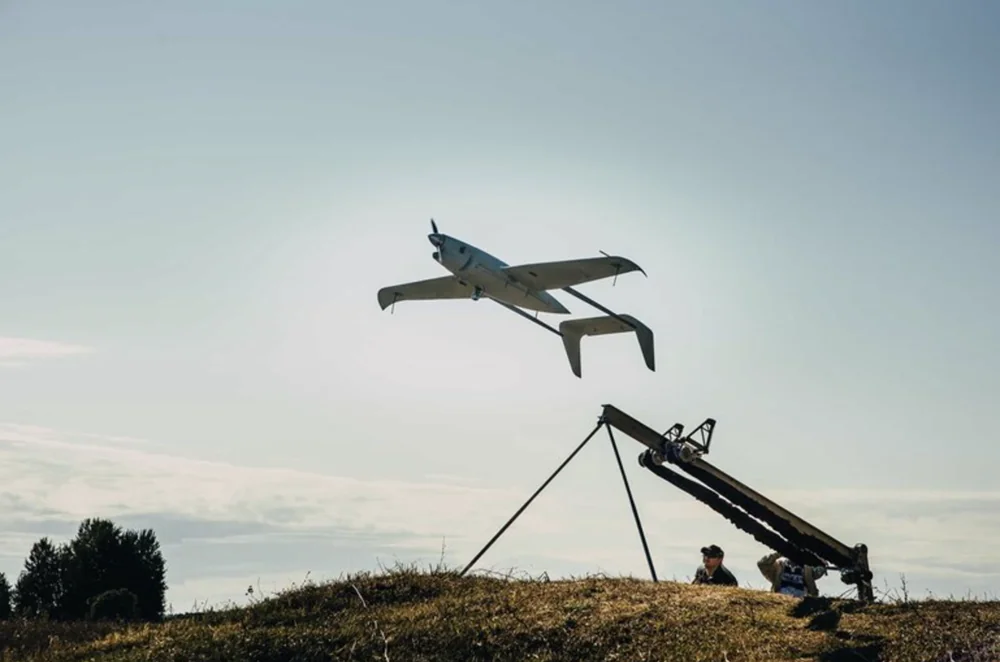
The Raybird drone can collect information around the clock and transmit it to the ground station at a distance of 100-150 km. Without relay, the remote control range does not exceed 160 km. At greater distances from the station, the drone follows a pre-programmed route. The maximum operational range is 1000 km.
It’s also worth noting that the final cost of the drone is influenced by the number of sensors onboard. For example, a system consisting of several drones and a ground station can cost up to a million dollars. Therefore, it is important to understand that this is a fairly expensive system, and its production takes a significant amount of time.
SKIF
Culver Aviation supplies the SKIF drones. The basic model, designed as a “flying wing,” has a wingspan of 1.5 meters and a takeoff weight of 3.8 kg. It has a flight range of 130 km. This electric drone can stay in the air for 2 hours and reach speeds of up to 70 km/h. The maximum flight altitude is 1500 meters.
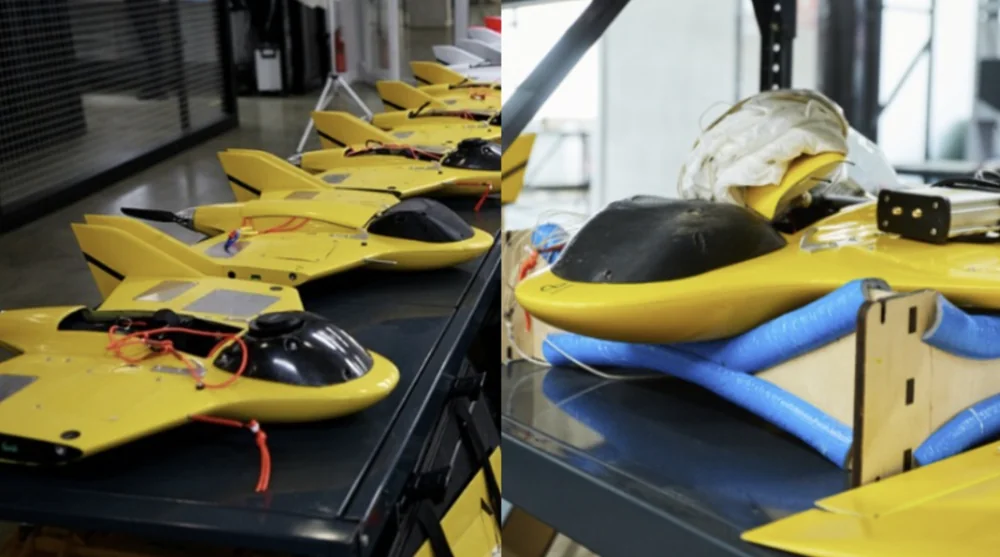
Initially, the SKIF was developed for monitoring the Earth’s surface and mapping for farmers, commercial companies, and government organizations. However, since the drone proved effective for battlefield observation and close reconnaissance, it is now used by the Ukrainian Armed Forces. In August 2022, it was announced that 80 drones of this type were purchased.
The drone, adapted for military tasks, switches to a radio silence mode and continues collecting reconnaissance information autonomously if the control channel is suppressed under active electronic countermeasures. It returns to the launch point using signals from the satellite navigation system.
RAM II UAV barrage munition
The RAM II UAV is a Ukrainian drone capable of surveillance and targeting lightly armored vehicles. It was developed in 2018 by leading Ukrainian companies in this field: CDET (KORT), DeViRo, and “Ukrainian Armored Vehicles.” The kamikaze drone was developed based on the reconnaissance UAV Leleka-100. Interestingly, each of these companies had its own area of expertise before this project. DeViRo specializes in aircraft and drones, CDET (KORT) is known for secure communication systems, and “Ukrainian Armored Vehicles” provides chassis and likely combat payloads.
The manufacturers claim that the vast majority of components for the RAM II UAV are produced in Ukraine, from the body to the communication and control systems. Only some parts are purchased abroad, and even the circuit boards are soldered at domestic facilities. Additionally, the developers have found a way to make the RAM II UAV resistant to electronic warfare measures, which is highly advantageous for modern drones of this type.
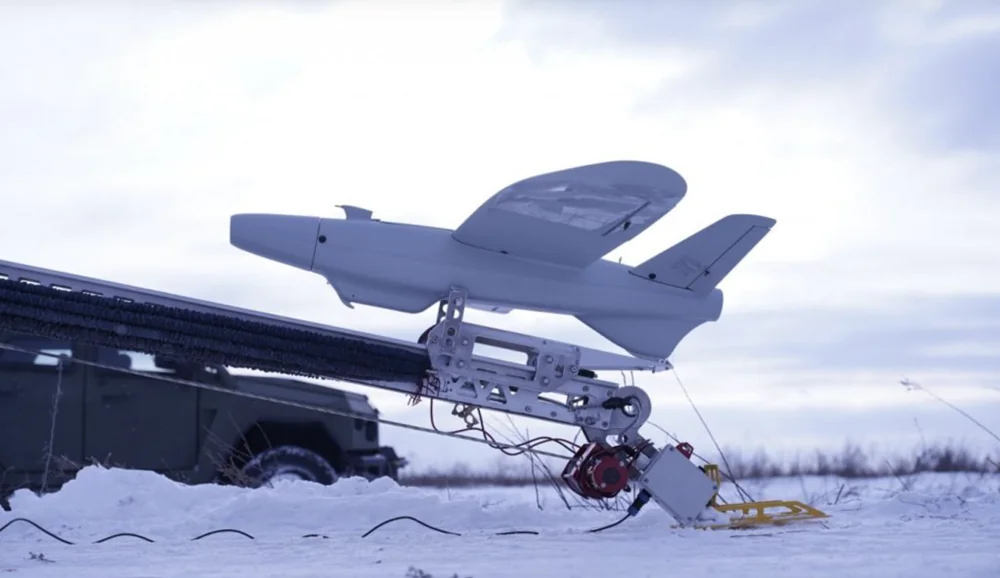
The loitering munition is equipped with optics featuring 30x magnification and digital stabilization. It is also noteworthy that the drone can acquire targets at distances of several kilometers. Once a target is locked, the drone can precisely strike it, even if it is moving quickly.
The RAM II UAV has a wingspan of 1.8 meters, weighs 11 kg, and can perform combat flights lasting up to 2 hours. This kamikaze drone can carry a warhead weighing up to 3 kg, which can be a fragmentation, cumulative, or thermobaric warhead.
Thanks to its electric motor, the Ukrainian-made kamikaze drone can approach its target silently. It can stay airborne for about 55 minutes and track targets at distances of up to 30 km.
For target identification, the RAM II UAV uses a Full HD gyro-stabilized camera with 10x optical zoom. An active visual tracking system helps capture the target in real time. If necessary, the kamikaze drone can track the target’s movement and respond accordingly.
Shark UAV-reconnaissance
Interestingly, this Ukrainian strike-reconnaissance drone was developed after the start of the full-scale Russian invasion. Yet, within just six months, it underwent all necessary flight tests and soon appeared on the front lines.
The main task of the Shark UAV is to detect and adjust fire on critical enemy targets. Its standout feature is a camera with 30x optical zoom, allowing it to observe Russian positions from up to 5 km away. The drone has a flight range of up to 80 km. It reaches a cruising speed of up to 75 km/h, with a maximum speed of 130 km/h. The maximum flight altitude of the Shark UAV is not specified but generally, reconnaissance drones operate at altitudes significantly higher than 130 km/h.

The drone is launched from a special catapult and lands using a parachute. The Shark UAV is capable of adjusting the fire of heavy artillery and is highly resistant to electronic warfare measures as well as challenging weather conditions, including strong winds, rain, and snow.
The Shark UAV can conduct reconnaissance for targeting HIMARS multiple launch rocket systems, penetrating up to 60 km behind enemy lines. Its flight time exceeds 4 hours, and preparation and launch using the catapult take only 15 minutes. A true predator in the sky!
Promising UAV Sokol-300
The drone, still under development by the Kyiv design bureau “Luch,” is intended for reconnaissance and striking ground targets at tactical and operational depths. The Sokil-300 is an operational-tactical level strike UAV. Depending on the variant, the maximum takeoff weight of the new Ukrainian drone will reach up to 1225 kg. Ideally, Ukrainian engineers aim for a flight duration of 5 hours, a maximum speed of up to 580 km/h, and a flight range of approximately 1300 km. The known dimensions of the model are a wingspan of 14 meters and a fuselage length of 8.57 meters.

Developers note that the Sokil-300 will feature a Ukrainian-made optical-electronic station. For propulsion, they are considering Ukrainian engines AІ-450Т2 and МС-500В-05С/СЕ, as well as the foreign Rotax 914 engine, which could allow the drone to remain airborne for up to 26 hours. The UAV will use a control station from the RK-360 MC “Neptune” anti-ship missile system. It may also be equipped with the RK-2P guided anti-tank missile, which has a range of up to 10 kilometers, currently being developed by the Design Bureau “Luch.”
But all these parameters are still theoretical. It takes a year and a half to develop and test.
Conclusion
We may have missed some drones and UAVs while focusing on the best and most interesting developments by Ukrainian specialists. In the next article, we’ll discuss more advanced kamikaze drones like Bobеr, Lyutyi, and the Russians’ nightmare, Baba Yaga. We promise to keep expanding on this topic on our platform. Stay tuned for more articles and reviews!
Read also:
- Ukrainian Forces Shot Down Russian Su-25 Attack Aircraft in Donetsk region
- Boeing and Antonov to Collaborate on Defense Projects
- U.S. is Bringing Retired B-1B Bombers Back into Service


